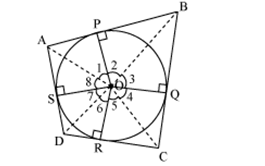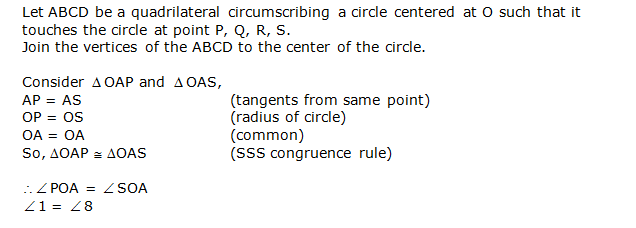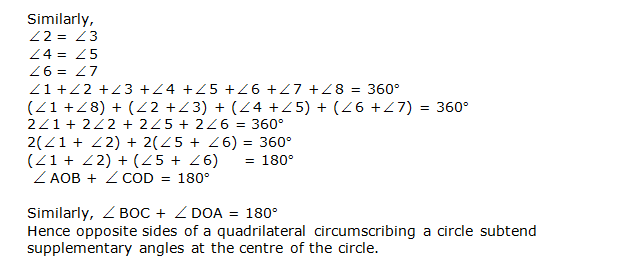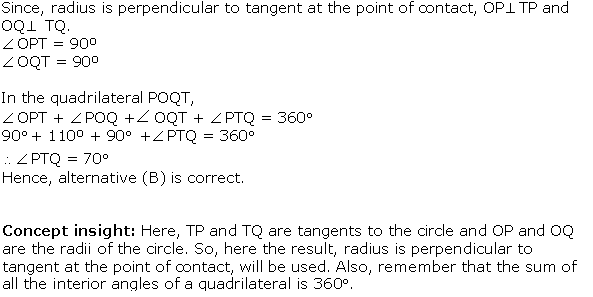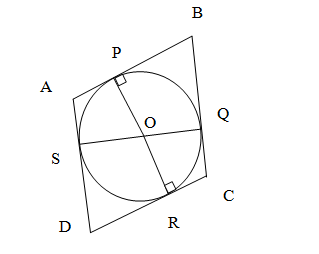Class 10 NCERT Solutions Maths Chapter 10 - Circles
Circles Exercise Ex. 10.1
Solution 1
Solution 2
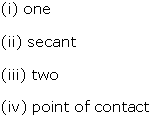
Solution 3
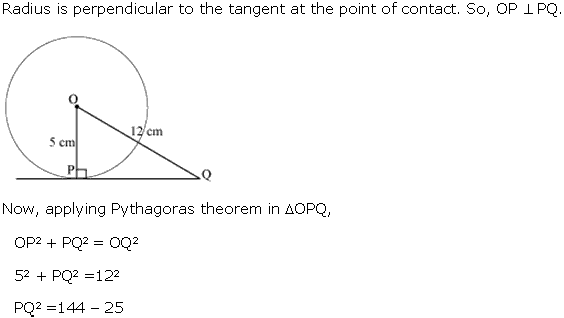

Solution 4

Circles Exercise Ex. 10.2
Solution 1
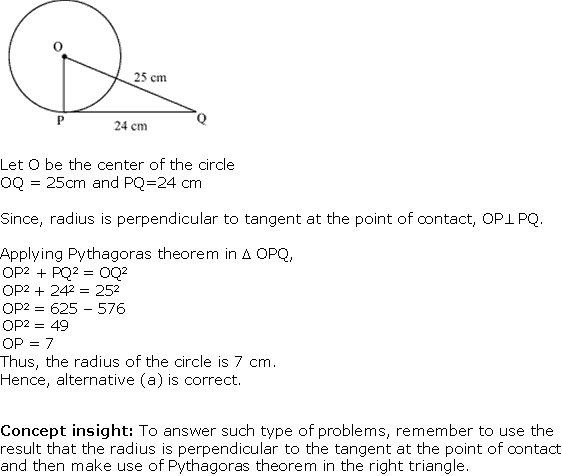
Solution 2
Solution 3



Solution 4
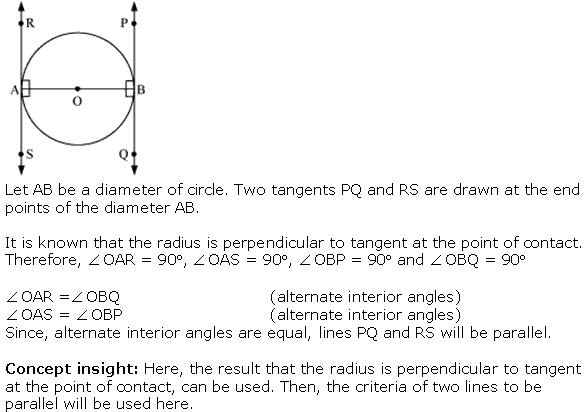
Solution 5
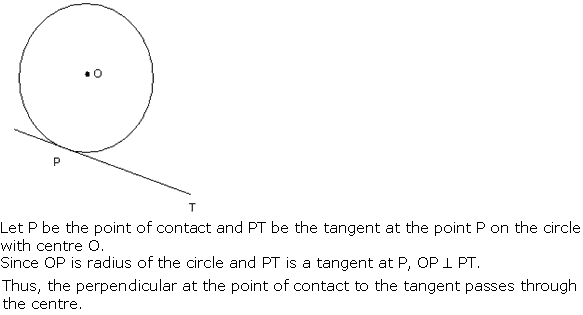
Solution 6

Solution 7
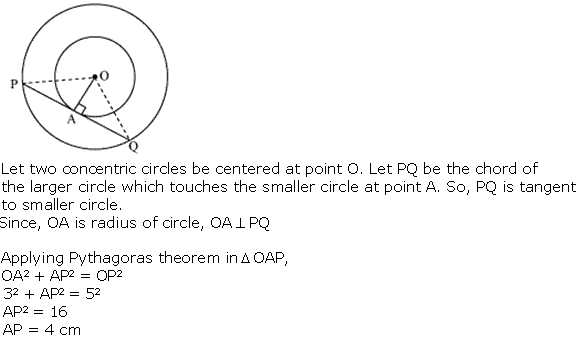
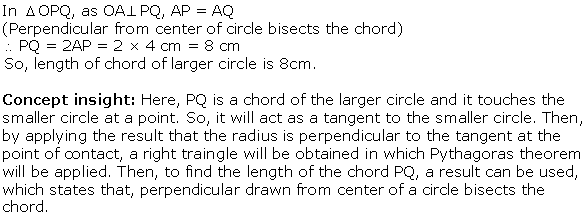
Solution 8
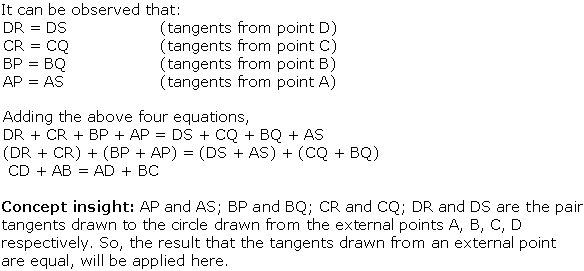
Solution 9


Solution 10
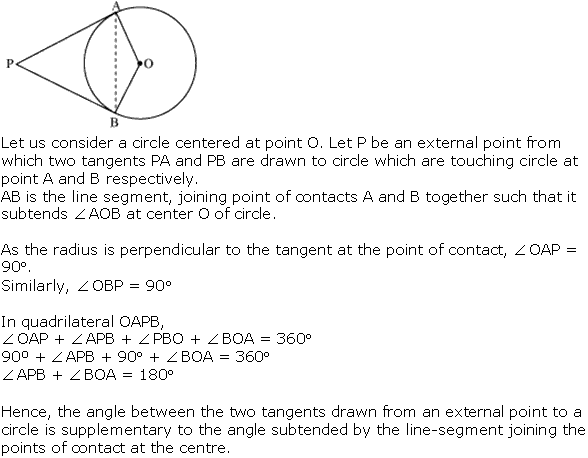
Solution 11
Since, ABCD is a parallelogram,
AB = CD (i)
BC = AD (ii)
Now, it can be observed that:
DR = DS (tangents on circle from point D)
CR = CQ (tangents on circle from point C)
BP = BQ (tangents on circle from point B)
AP = AS (tangents on circle from point A)
Adding all the above four equations,
DR + CR + BP + AP = DS + CQ + BQ + AS
(DR + CR) + (BP + AP) = (DS + AS) + (CQ + BQ)
CD + AB = AD + BC (iii)
From equation (i) (ii) and (ii):
2AB = 2BC
AB = BC
AB = BC = CD = DA
Hence, ABCD is a rhombus.
Solution 12
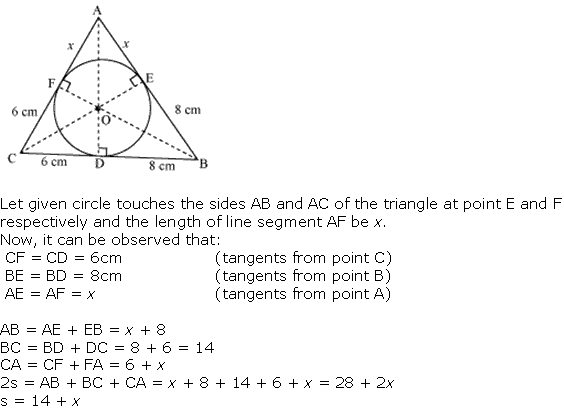

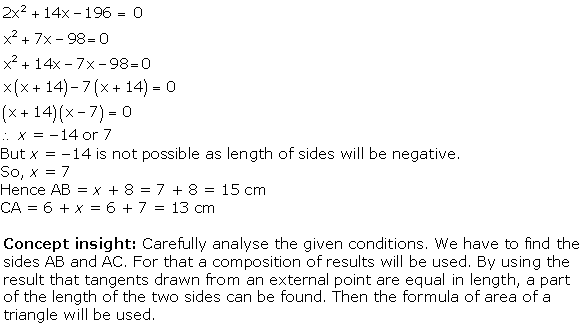
Solution 13
